Behind The Scenes on Gravity
Director Alfonso Cuarón’s heart stopping Gravity is causing critics to say that they’re finally seeing a film where 3D is no longer a gimmick and that the best way to experience this film is in immersive IMAX 3D. This round up of production, post and visual effects behind the scenes insights will take you into the film’s gripping world.
For a simple 5 minute tour of the film’s production and post production you could simply watch this EPK before jumping into some of the more detailed articles.
The DVD and Blu-ray of Gravity has now been released. Nominated for 10 Academy Awards and winner of 7, if you’ve not yet seen the film – seriously, what are you waiting for?!
Buy on Amazon.com | Buy on Amazon.co.uk
Gravity in Production
https://www.youtube.com/watch?v=uJEkPq1WA3g
With a movie like Gravity it’s hard to define exactly where pre-production, production and post production delineate and so the ways in which I’ve split all these resources up, might feel a little arbitrary.
Update: For an enjoyably anecdote laden write up on the making of Gravity this excellent article from DazedDigital is a great read.
To simulate free floating space cadets, Cuarón enlisted the help of automobile manufacturing technology. These robots usually deal in autos, which meant toting around a 5 foot 7 Sandra Bullock was effortless. They also have the precision of movement (hence the pre-vis and pre-programming) that even the steadiest grip couldn’t replicate for camerawork. “The night before we started shooting, nothing was working. The night before, we had a dummy there doing a test and the robot just went through the head like paow!”
This post from The Wrap offers some good quotes and insights into the making of the film which stretched over 4 and a half years and pushed the available technology to the limit, while the team wrestled with just how to achieve Cuarón’s ambitious vision.
They also constructed something called the “light box.” The 10 foot by 10 foot space was outfitted with more than 4,000 LED lightbulbs and functioned as a giant television screen. It allowed the effects team to play any computer graphics image they wanted in order to get the light from the sun, the stars and other celestial adornments just right. Roughly 60 percent of the film was shot in the box.
Cinematographer Emmanuel “Chivo” Lubezki, ASC, AMC is interviewed on his ground-breaking work on the film in this short but meaty American Society of Cinematographers article. Extensive coverage of Gravity is available in the November edition of the ASC magazine which you can read here. Including an excellent breakdown of the file based workflow.
“On Gravity, a big part of my collaboration was to do the virtual lighting,” says Chivo. “I was lucky to be included in the movie that way. And virtual lighting is not more or less than the more conventional light we have always done. But it is every bit as important. And I think we are going to be doing more and more virtual lighting.”
For some great behind the scenes photographs check out this collection from Dreadcentral.com and for an long read on the inside story of the films production sit back and enjoy this superb article from Variety.
In the end, those behind the scenes agreed that the technology and prep succeeded in one crucial respect: It let the filmmakers — and the movie — zero in on Bullock’s performance, which is already being buzzed about.
“The shoot for me was those Eureka moments,” says Cuaron, recalling one particularly absorbing closeup of Bullock as Stone when the character is talking about her daughter. “You’re cool that the light actually worked this time?” he asked Lubezki. “Was everything in sync?” he queried Webber.
“The two of them said, ‘Of course. Forget about that. Do you see what just happened?’ Suddenly, with all that weight of technology, we were capturing a great performance. … It was those moments in which everything came together for what was the point of this film, the experience of a human up there.”
UPDATE: Space.com has this excellent write up on the film’s production challenges, particularly those of accurately conveying the inherent weightlessness of space and the laws of physics that apply in space.
Set an object rotating in microgravity and it will not slow visibly until some other force acts upon it… The behaviour of masses handled by intelligent gloved hands on an EVA is hard to fake. When that mass is a space-suited astronaut, “torqued” around by the movement of a much more massive spacecraft, only someone who has experienced it can describe the feeling.
Post Production
Editor Mark Sanger is interviewed at length in this excellent article from MovieScope Magazine on his collaborative effort on the film. Mark shares a credit with Alfonso as ‘co-editor’, but his visual effects editing background on Children of Men was key to landing the role.
Creatively, Alfonso likes to have a palette of tools that he can dip in and out of as the film grows in his mind—which can be disconcertingly fast. The script was our Bible but the dialogue could evolve minute-by-minute. As could the visuals. Alfonso would think of a change to a shot on the way in to work, would arrive and implement that change with VFX, then walk across the road to me to see how the change had affected the edit.
Editor Mark Sanger is interviewed by the chaps at Stackpod (2 film fans and friends) about his work on the film for over an hour. You can stream it online or download it here. He also has a good interview over on Frame of Reference about how he got started as an editor and his preferred editing process.
Editing is story-telling. The process is different on any project but always driven by the script and the Director’s vision. There are always technical challenges on any film, the key is to never let these outweigh the process of telling the story. The story evolves from the moment the cameras first turn-over. That is part of the thrill of editing. So from a practical point of view it is always good to keep every take, performance and option freely available and to hand. It means the Director always has the flexibility and confidence to shape the story into it’s very best possible form.
In the following two behind the scenes (Avid promos), editor Mark Sanger and and sound mixer Skip Lievsay share their insights on working with Avid products on the film.
Update: Gravity wins the Oscar for Best Editing! In this excellent read, Steve Hullfish interviews Mark Sanger on the four year editorial process, that continuously shaped the film.
SANGER: We shot on Arri Alexas for three months across two stages at Shepperton Studios. The shoot had been defined so precisely in advance that the practical elements of any given shot would lock seamlessly into our animation.
Alfonso & I would make decisions over preferred takes and then I would garbage matte this over the animation. This would then give us a sense of the scene which in turn opened up many more questions.
The restrictions we had with the pre-determined shots and no coverage actually opened up more possibilities than we had imagined during post-production. The film was shaped in post just as much as it had been in pre-production.
Update: Editor Mark Sanger spoke at the Avid booth at NAB 2014, when that comes online I’ll be sure to post it here. In the meantime enjoy this short interview from post perspective at NAB. Matt Feury tweeted this image of Mark’s Avid timeline.
In this short EPK below Cuarón explains why IMAX is the only format for a film like Gravity. As a further insight from the director into why he chose to shoot the film in extended takes and how previs was critical to the production process, check out this Anatomy of a Scene from the New York Times.
Visual Effects on Gravity
All of the stunning visual effects in the film were almost entirely created by The Framestore in London. In this fantastically in-depth article FX Guide walks through the innovative production and post production process and how they managed to pull off an impossible challenge.
“Whenever a new person came to join in any department, not just in visual effects, it would kind of take two weeks before they could understand the process and the way the film worked. It was so different to any previous method of making a film, really. It took that long for people just to understand what we were talking about.” – Tim Webber VFX Supervisor
FX Guide also have a podcast interview with Tim that you can listen to here. The Framestore also have a pretty comprehensive list of all the VFX breakdown articles that have been written about Gravity so far.
Studio Daily also have a great Q&A with Webber with plenty of interesting insights into the unique challenges a zero-gravity space film through up for the animators. (In shots like these the actors faces are real, but everything else is CG.)
We had to make sure that all the animators who worked on the previs, and the proper animation later, understood the physics of space. It was hard. The behavior of movement in space is significantly different. Good animators give weight to characters. It’s deeply ingrained. Suddenly, they had animation with no weight at all. No air resistance to slow things down. So we gave them physics lessons. They studied footage from NASA. We had advice from astronauts. And we did some simulation work that was useful and informative. They didn’t often use it directly, but it would inform us and show us what would happen. Most of the previs was done in Maya. For the debris, we had proxies in the previs.
UPDATE: Creative Cow also have an excellent article on how the stereoscopic 3D was created for the film with an innovative mix of both 3D conversion and 3D VFX. It’s a fascinatingly in-depth read that guides you through the conversion process for a single shot of the film. This is an approach that could become more and more influential as Gravity continues to break most people’s perceptions of 3D as a gimmick.
UPDATE: In these behind the scenes interviews the talented chaps from Prime Focus World discuss their two year challenging odyssey working on Gravity. It’s a great opportunity to hear from some of the top people in the business on the intricate technicalities of stereo conversion. Read this interview with Richard Baker and Matthew Bristowe from 3Dguy.TV on PFW’s work as well as the inside story of the 2D – 3D conversion process over on Prime Focus World’s blog.
Due to the nature of the show, and the immense visual and technical complexity of the sequences, we knew that we were going to be working on live shots in an open cut, and that there would be much passing back and forth of work-in-progress shots between ourselves and Framestore.
UPDATE: CG Artist Online has an excellent breakdown from three of Framestore’s department specific supervisors on the creation of the earth, stars and lens flares in the film.
We constructed a celestial sphere from a database of the 120,000 or so most visible stars from the Earth that contained information about relative positions, velocities – which we converted into hues – and intensities. This meant we had the correct constellations in the correct positions. We then filled the remaining gaps with clouds of other stars created by duplicating the existing stars at lower exposures until we had over 30 million in our star field.
Framestore also has it’s own write up on the work on the film and recently tweeted this fantastic image (below) which demonstrates each stage of the films VFX production. Framestore has expanded it’s write up’s to include blowing up the ISS and rendering the universe, which are all full of brilliant insider details of the enormity of the work involved:
To render Gravity on a single core machine with a single processor in it and be ready for 2013 you would need to start before the dawn of Egyptian civilisation. Renders rarely look right the first time and comments need to be given and addressed – typing into a program called Shotgun, Gravity’s VFX Co-ordinators wrote the equivalent of four copies of War and Peace while taking notes during feedback.
Update: Empire magazine has voted VFX Supervisor Tim Webber their ‘Unsung Hero of the Year 2013’ and interview him for his work in Gravity in this short interview.
The first big decision that had to be made was to make it so much in CG, and that was a very risky, difficult decision to make three, four years ago.
Update: Rising Sun Pictures posted this excellent breakdown of the re-entry sequence, detailing many of the physics simulations, render passes and workflow processes involved in creating these stunning effects.
Update: Head of R&D at Framestore, Martin Preston, talks with Solid Angle about the reasons why Arnold was their renderer of choice on this epic visual effects film.
GQ Magazine has a great ‘oral history’ of the opening 13 minute single take with several of the key players from Framestore’s VFX department describing all the work that went into it.
Several months into the animation stages, Cuaron decided to alter a key part of the”detached” scene. The entire space shuttle would be flipped upside down.
MS: Somebody was working on a shot on their desk, and what we often do when we’re working in animation is flop the shot on your computer screen, because it helps you to look at it with fresh eyes. Alfonso was walking in with Charles and he saw the shot flopped upside down and said, “Wow, that looks cool!”
In this interview Chris Corbould is interviewed by DP/30 on his career and his role as VFX Supervisor on Gravity.
Update: VFX Supervisor Tim Webber and lead compositors from Framestore describe how they created many of the amazing effects in the film, particularly using The Foundry’s NUKE software.
Sound Design
The Soundworks Collection profiles are always excellent and this edition on Gravity is no different. Director Alfonso Cuarón and re-recording mixer Skip Lievsay describe the methodology of creating the audio environment for a realistic interpretation of being in outer space, including the necessity of experiencing the film in a surround sound environment, specifically Dolby Atmos.
You can also check out a 23 minute ‘tease’ of Steven Price’s score for the film, which as noted in the Soundworks Collection film, was heavily panned around the room in the mix.
UPDATE: Avid blogs has this short interview with Skip Lievsay from the floor of the AES show in New York by Tom Graham, Marketing Manager for Avid’s Post Audio and Pro Mixing.
Skip prefers to mix virtually in Pro Tools (or as they say ‘in-the-box’), and says that in doing so offers he and the director the most flexibility and choice at any point in the process and is his ‘home platform’ where he is most comfortable.
Gravity – Short ‘Companion’ Film Aningnaaq
In an unusual, but enjoyable move, the makers of Gravity have released Aningnaaq, a seven minute short film that tells the story of the other end of the conversation that Sandra Bullock has from space. Directed by Jonas Cuaron, co-writer of Gravity (and son of Gravity‘s director, Alfonso Cuaron) and shot in the icy tundra for $100, 000. It was originally screened to select audiences at a few film festivals, and will be included as an extra in Gravity‘s Blu-ray release. The Hollywood Reporter has a full write up here.
The short was filmed “guerrilla style” on location on a budget of about $100,000 — most of which went toward the 10-person crew’s travel costs — and Cuaron completed it in time to meld the dialogue into Gravity‘s final sound mix. The result is a seamless conversation between Aningaaq and Ryan, stranded 200 miles above him, the twin stories of isolated human survival providing thematic cohesion. Still, Jonas says he was careful “to make it a piece that could stand on its own.”
Fans of Alfonso
In this six minute video essay Nelson Carvajal scopes out the cinematic canvas of Alfonso, supported by an appreciative written essay from AD Jameson. It’s also worth checking out the blog post Vincent LaForet’s put together after seeing Gravity three nights in a row in a variety of different release formats. Wired magazine has a decent interview with Alfonso here and you can watch the director’s ‘Life in Pictures’ over on the BAFTA website. Enjoy!
Children of Men had an amazing tracking shot, and Gravity begins with a 15-minute opening shot. What’s the appeal of the long take for you?
The reason I like tracking shots has to do more with a sense of real time than anything else. In Gravity the use of tracking — of long extended takes — was partially because we wanted to film it like an Imax-style Discovery Channel documentary. You don’t have the luxury of cuts when you’re in space. The camera is there; you’re just observing. And isn’t it amazing how Earth looks from out there?
Sure, as long as you’re not floating away without a tether. After almost five years working on Gravity, what’s next?
Any movie in which the characters walk on the floor.
UPDATE: Kristin Thompson and David Bordwell have two excellent analyses of Gravity. The first focuses on Gravity as an experimental film and it’s plot, whilst the second post focuses on the style and substance of the film, including a few specific breakdowns. If you’re into this kind of thing, both articles are well worth a read.
Strongly innovative films in the Hollywood tradition need the support of classical conventions to keep the narrative clear and appealing. Two of Gravity‘s most traditional techniques are its motifs and its motivations. Motifs can quickly make the characters more vivid, even if they are not particularly rounded or complex. Motivations often involve planting an object or event in advance.
Update: The National Film and Television School, here in the UK, hosted a masterclass for it’s students with Alfonso on his approach to making the film.
Despite the interest in the film’s technical achievements, Cuar?ón insists that this is a human story: “Amidst all the tools and effects, we were always clear that her struggle is a metaphor for anyone who has to overcome adversity in life and get to the other side. It is a journey of rebirth.”
UPDATE: In the video above from Total Film the filmmakers talk through the ‘foetal/rebirth’ scene, with plenty of extra detail on their making of page. In the video below Alfonso is interviewed on Charlie Rose and you can also check out the director’s Reddit Ask Me Anything thread here.
Update: Yahoo Movies has an ‘exclusive’ interview with Alfonso about the opening 11 minute single take which has some great info I can’t embed here, so check it out. In the videos below DP/30 and First Showing have their own interviews with Alfonso.
Update: BAFTA LA recently posted this 50 minute conversation with Alfonso about his entire career. Nathalie from Mentorless has a great write up of it here, pulling out some excellent key quotes and ideas.


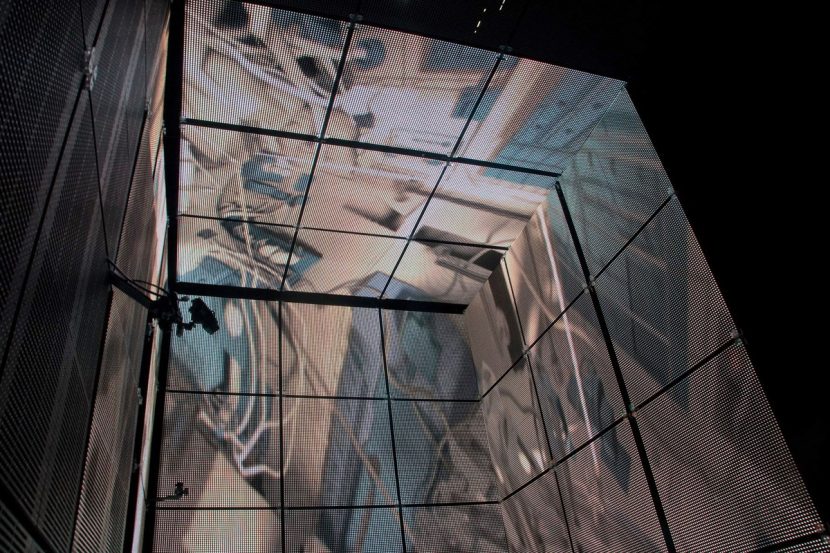
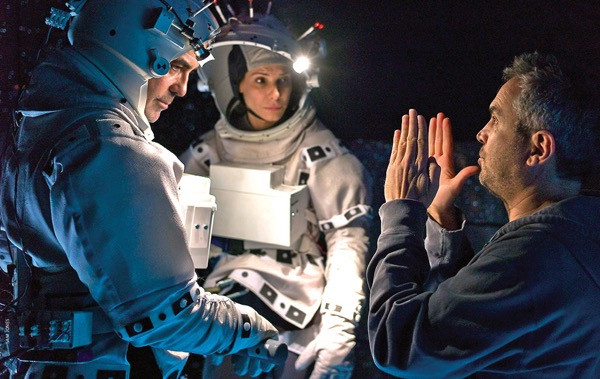
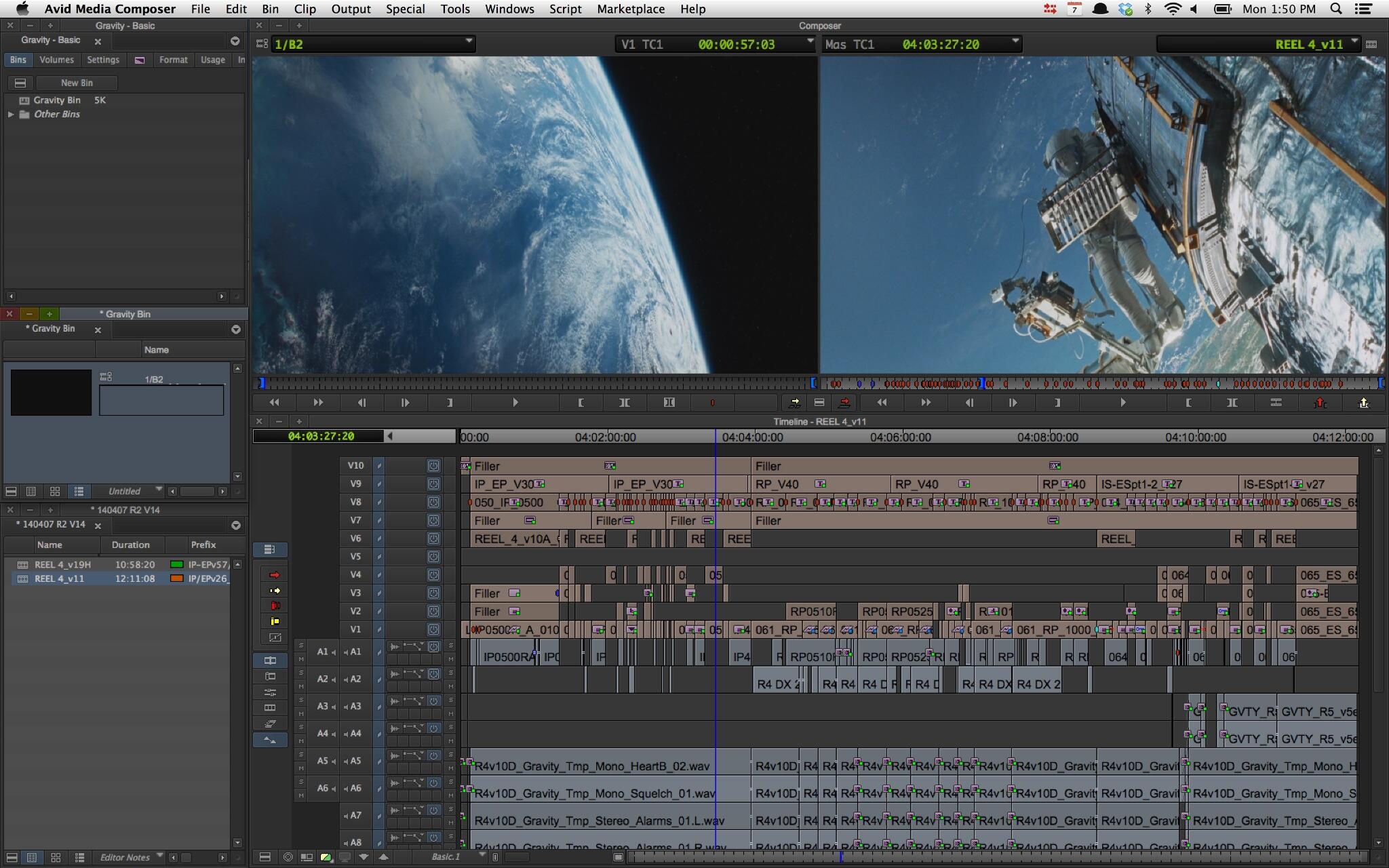
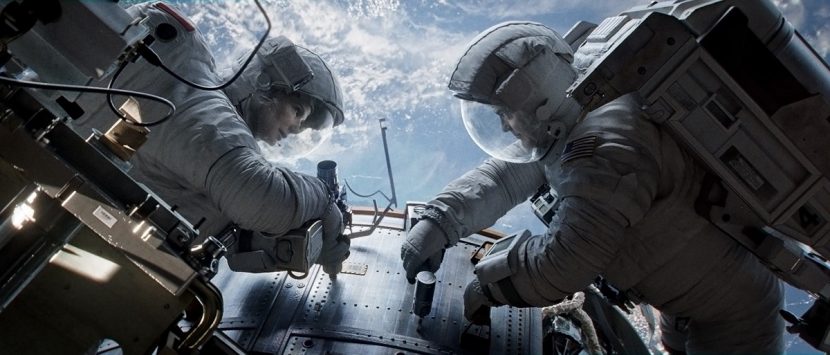




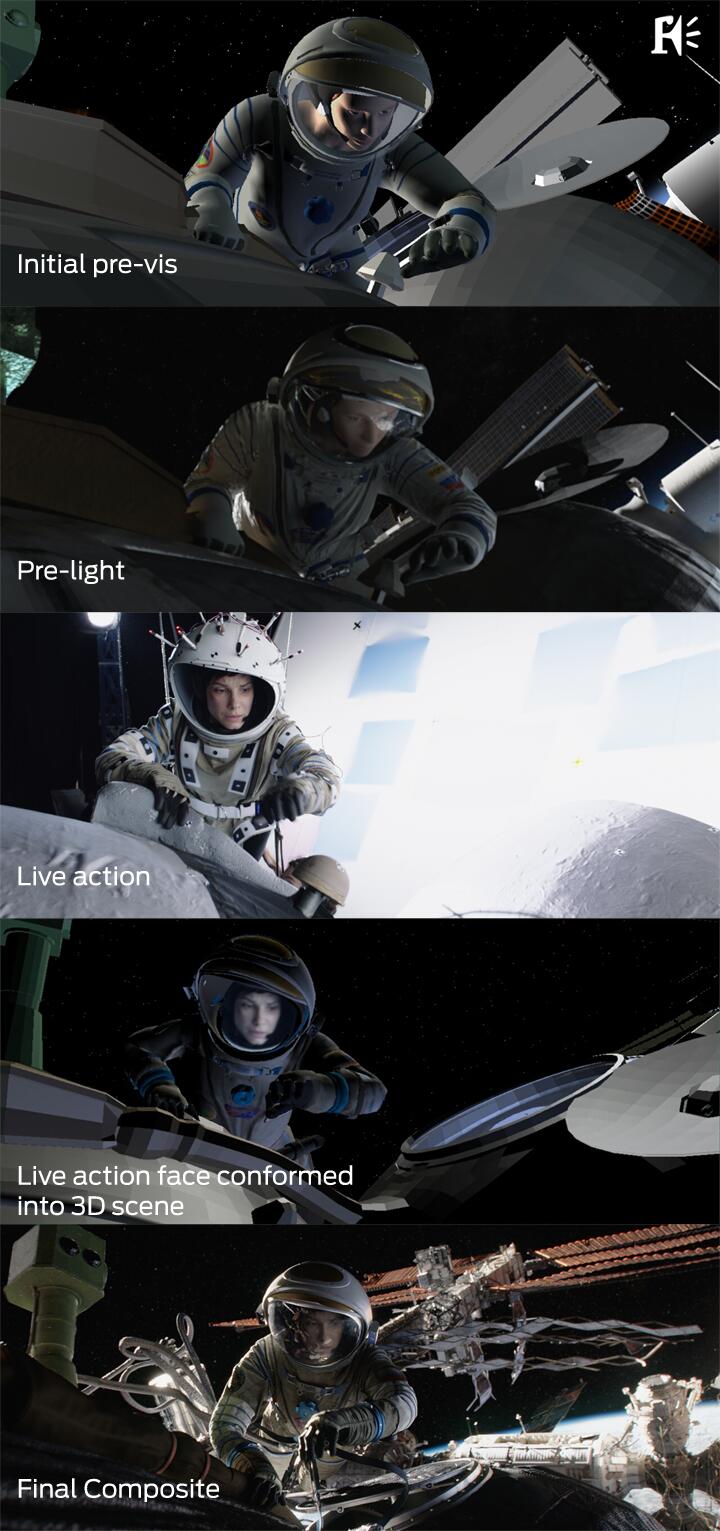


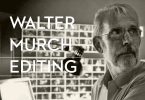


No words to say….
The great movie
Thanks to technicians….
this is one of the greatest most ground breaking films of this decade. i saw it in 3D and i must say i felt as if i was in space. beautiful film, looking forward to more from Alfonso Cuarón.